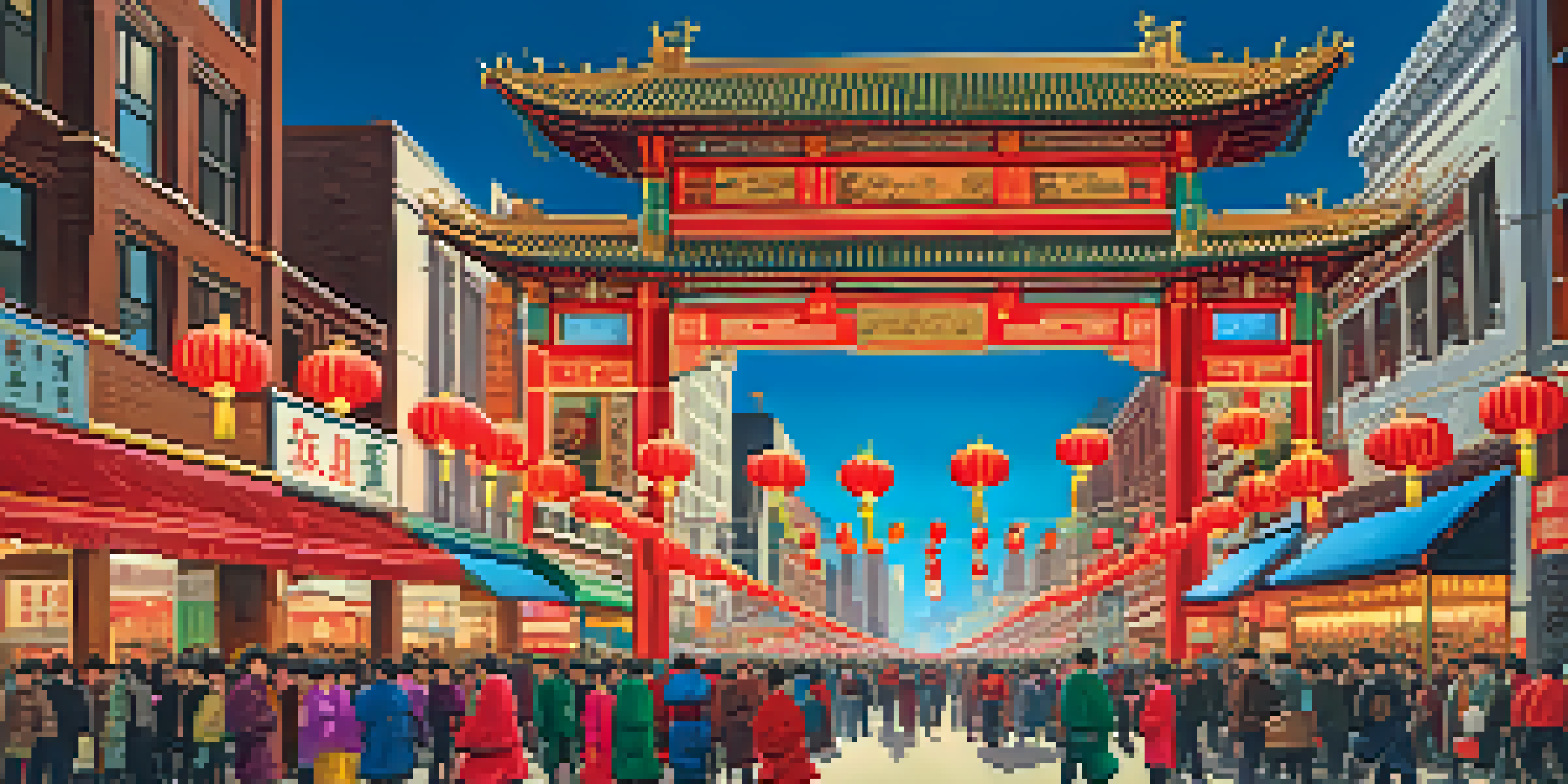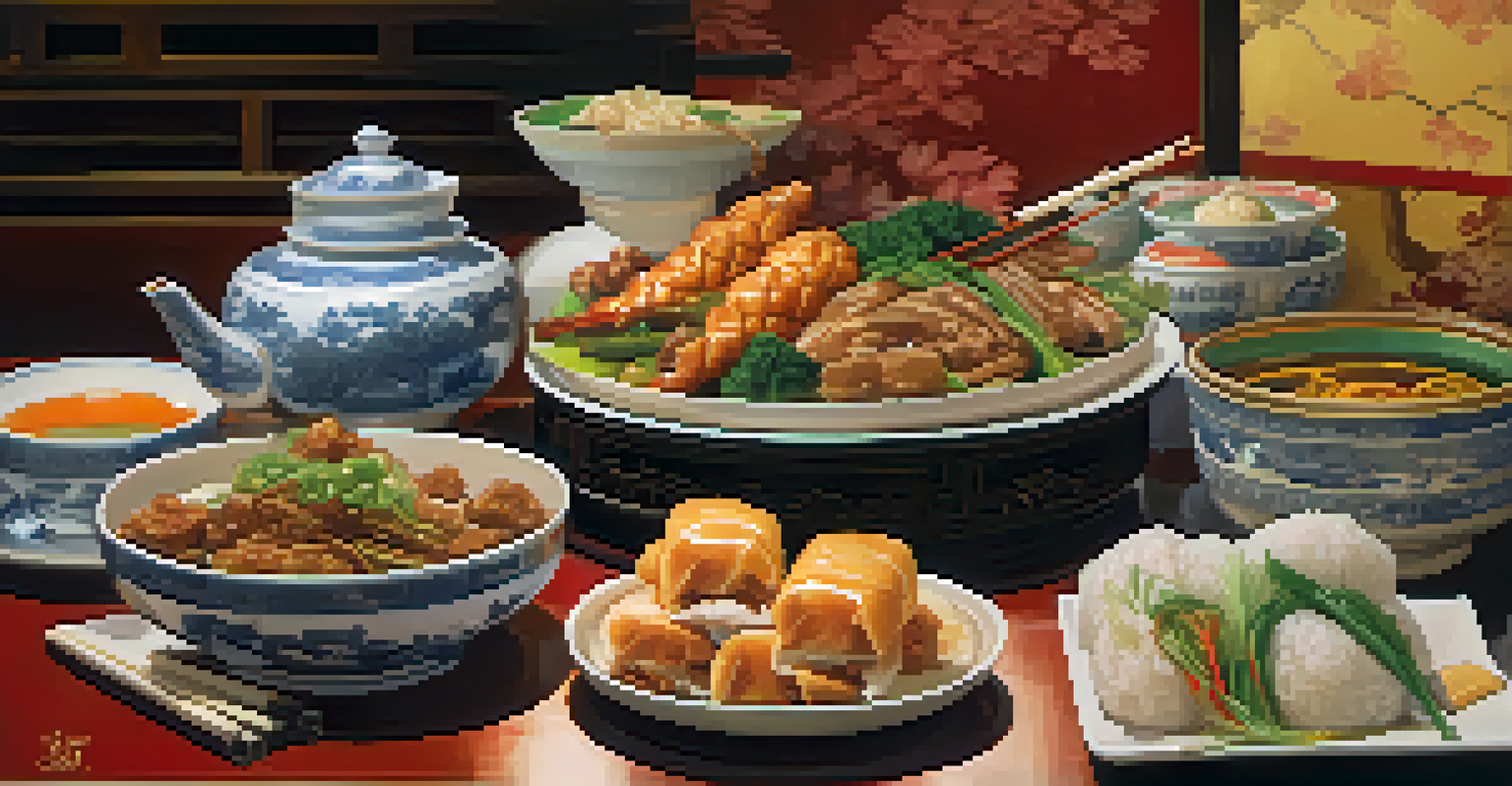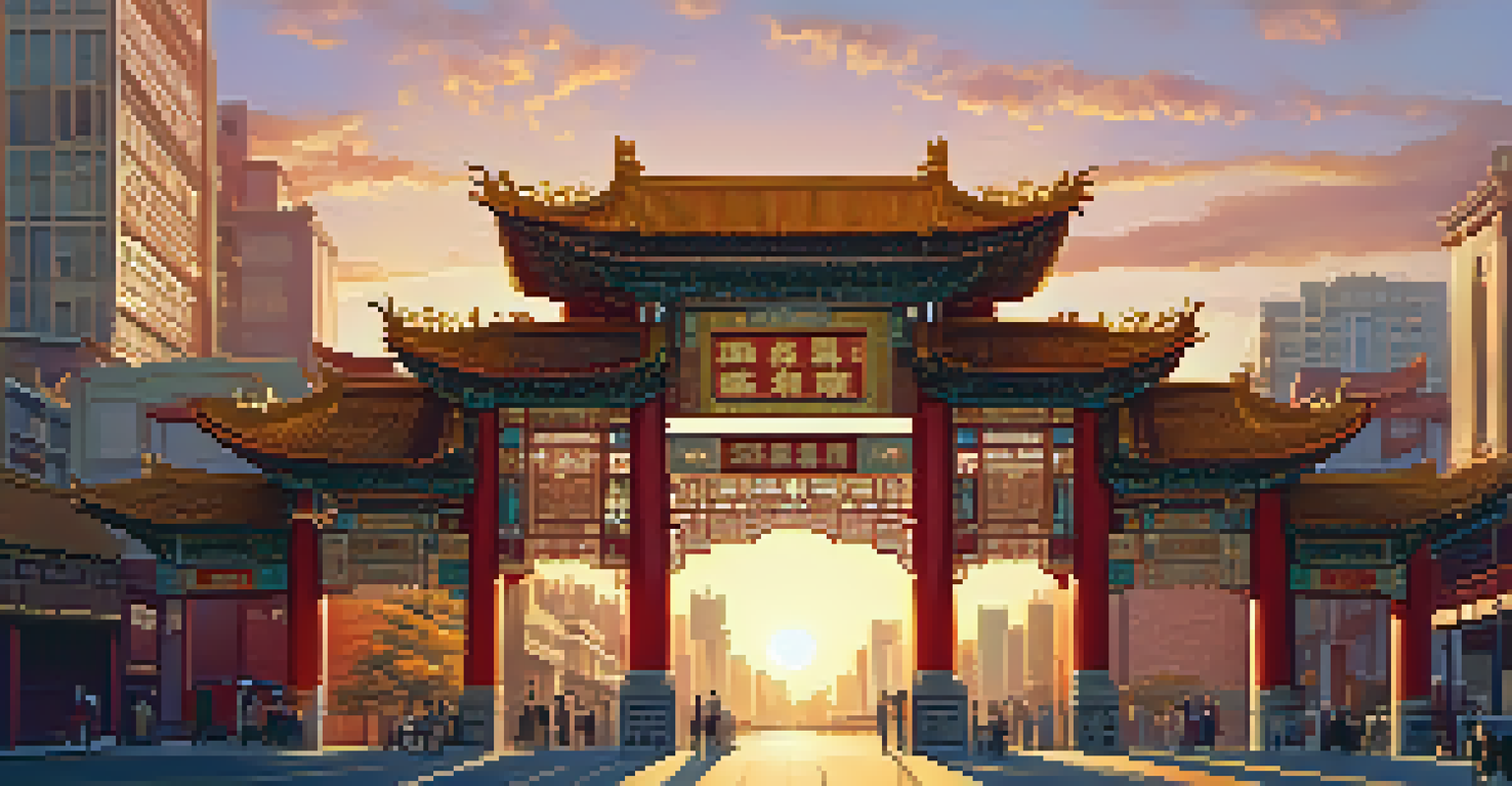The Rich Heritage of Chicago's Chinatown: A Cultural Overview

A Brief History of Chicago's Chinatown
Chicago's Chinatown has a rich history that dates back to the late 19th century. Initially established by Chinese immigrants seeking better opportunities, this vibrant neighborhood has grown and evolved over the years. The first wave of Chinese settlers arrived to work on the railroads and later found their way to the bustling city of Chicago.
Culture is the widening of the mind and of the spirit.
By the 1910s, Chinatown had developed into a thriving community, complete with shops, restaurants, and social organizations. The neighborhood faced challenges, including prejudice and economic hardships, yet it persevered and maintained its unique cultural identity. Today, it stands as a testament to the resilience of its residents and their dedication to preserving their heritage.
Significant events, such as the establishment of the Chinese Consolidated Benevolent Association in 1913, played a vital role in unifying the community. This historical backdrop sets the stage for understanding the cultural richness that characterizes Chinatown today.
Cultural Festivals and Celebrations
Chinatown is a hub for vibrant cultural festivals that celebrate Chinese traditions and community spirit. One of the most prominent events is the annual Chinese New Year Parade, where colorful floats, dragon dances, and firecrackers fill the streets. This celebration draws thousands of visitors, showcasing the lively atmosphere and deep-rooted customs of the community.

In addition to the New Year festivities, the Mid-Autumn Festival also holds a special place in the hearts of residents. Families gather to enjoy mooncakes, share stories, and appreciate the beauty of the harvest moon. These celebrations not only reinforce cultural ties but also invite outsiders to participate and learn about Chinese customs.
Rich Cultural Heritage of Chinatown
Chicago's Chinatown showcases a vibrant history, marked by resilience and cultural preservation since the late 19th century.
Through these festivals, Chinatown fosters a sense of belonging and pride among its residents while inviting the wider community to experience its rich heritage. They serve as a reminder of the importance of cultural preservation in an ever-changing world.
Culinary Delights of Chinatown
The culinary scene in Chinatown is a vibrant tapestry of flavors and traditions that reflect the culture's rich heritage. From dim sum to Peking duck, the variety of dishes available is both enticing and authentic. Iconic restaurants, such as MingHin Cuisine, offer a taste of traditional Chinese cooking that has been passed down through generations.
Food is our common ground, a universal experience.
Street vendors also play a crucial role in the culinary landscape, serving quick bites like bao and steamed buns. These delicious snacks provide a glimpse into everyday life in Chinatown, where food is not just sustenance, but a way to connect with culture and community. Visitors often find themselves drawn to the bustling atmosphere, where the aroma of spices and grilled meats fills the air.
Food in Chinatown serves as a bridge between cultures, inviting everyone to share in the experience. The diversity of culinary offerings is a testament to the neighborhood's ability to adapt while maintaining its authentic roots.
Art and Architecture: A Cultural Reflection
The architecture in Chicago's Chinatown is a beautiful reflection of its cultural heritage, combining traditional Chinese elements with modern design. Landmarks such as the iconic Chinatown Gate, adorned with intricate carvings and vibrant colors, welcome visitors into this unique neighborhood. This gate stands as a symbol of cultural pride and serves as a reminder of the community's historical roots.
Art plays an equally important role in expressing the identity of Chinatown. Murals and sculptures throughout the area depict significant events, folklore, and the daily lives of its residents. These artistic expressions not only beautify the streets but also tell stories that resonate with both locals and tourists alike.
Celebrations Foster Community Spirit
Annual festivals like the Chinese New Year Parade and Mid-Autumn Festival strengthen cultural ties and invite wider participation.
Through its art and architecture, Chinatown communicates its rich heritage and cultural significance. Each structure and piece of art serves as a narrative, inviting exploration and appreciation of this vibrant community.
Community Organizations and Their Impact
Community organizations in Chinatown play a vital role in preserving cultural heritage and supporting residents. Groups such as the Chinese Mutual Aid Association provide essential services, including language classes, job training, and community outreach. Their efforts help bridge the gap for new immigrants, ensuring that they feel welcomed and supported.
These organizations also host cultural events and educational programs that promote awareness and understanding of Chinese traditions. By engaging with both the local and wider communities, they foster a sense of inclusivity and appreciation for the rich tapestry of cultures that make up Chicago.
The impact of these organizations extends beyond immediate assistance; they cultivate a sense of unity and pride among residents. By empowering individuals and preserving cultural traditions, they contribute to the vibrant heritage of Chinatown.
Shopping: A Blend of Tradition and Modernity
Chinatown offers a unique shopping experience that blends traditional markets with modern retail. Visitors can explore bustling shops selling everything from herbal medicine to handcrafted gifts, each reflecting the cultural significance of Chinese traditions. Stores like the Chinese American Museum gift shop offer artifacts that tell the story of the community's journey.
In contrast, newer establishments also cater to contemporary tastes, featuring fusion products that appeal to a broader audience. This blend of old and new creates a dynamic shopping environment, where one can find both traditional Chinese items and modern interpretations of cultural artifacts.
Culinary Diversity and Community
Chinatown's food scene, from traditional dishes to street vendors, serves as a cultural bridge, connecting residents and visitors alike.
Shopping in Chinatown is not just about purchasing goods; it's an opportunity to immerse oneself in the culture. Each item purchased carries a piece of the community's heritage, making it a meaningful experience.
Education and Cultural Exchange Programs
Education plays a crucial role in fostering appreciation and understanding of Chinese culture within Chinatown. Schools and community centers often offer classes in language, art, and cooking, making it accessible for everyone. These programs not only educate residents but also invite visitors to learn about the rich history and traditions of the Chinese community.
Cultural exchange programs further enhance this experience by promoting dialogue and understanding among diverse groups. Events such as cultural workshops and student exchanges allow for sharing of customs, food, and language, creating a platform for mutual respect and appreciation.

Through these educational initiatives, Chinatown becomes a space of learning and collaboration, where cultural heritage is not only preserved but actively shared. This commitment to education enriches both the community and those who seek to understand it.